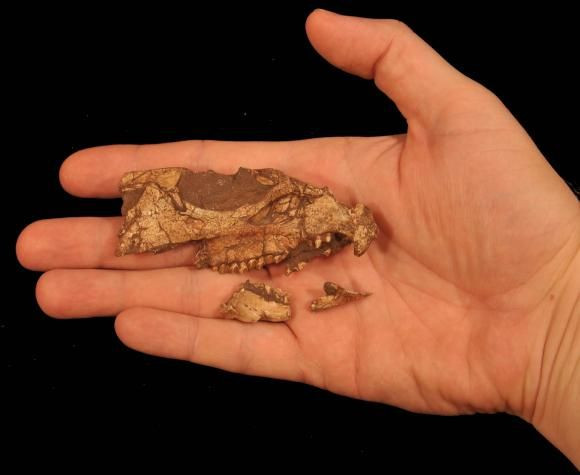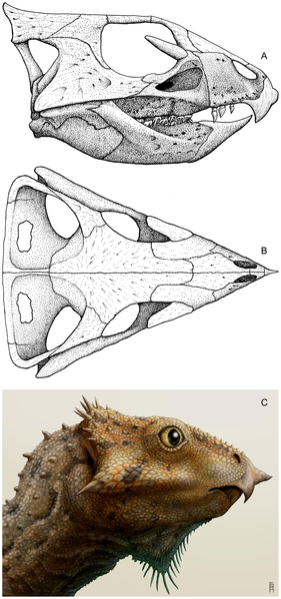108 Million-Year-Old Horned Dinosaur Discovered In Montana Is Oldest In North America [PHOTO]

A dinosaur the size of a bunny is rewriting one of the earliest chapters of North American history. The newly identified Aquilops americanu, an ancestor of the famed, fringe-headed Triceratops, is now considered the continent’s first horned dinosaur after its skull was found in Montana, according to a study published Wednesday in the journal PLOS One.
The tiny skull, no larger than the palm of a hand, was actually discovered in 1997 but wasn’t classified until much more recently, National Geographic reported. The fossilized remains belonged to a group of horned dinosaurs called ceratopsians, which thrived during the Cretaceous period but whose family tree was still ambiguous. The fossils of larger ceratopsians like the 30-foot-long (9-meter) Triceratops have been found all over North America, but their remains were dated to the later Cretaceous period, around 68 million years ago. Few fossils from the early Cretaceous have been discovered on the continent, leaving scientists to wonder how exactly the group made it there in the first place.
Paleontologists pinpointed Aquilops’ age to between 109 million and 104 million years ago, which suggests horned dinosaurs emerged in North America much earlier than previously thought. “Now that it's been officially described, we'll be able to more accurately talk about early horned dinosaur evolutionary history in North America,” Michael Ryan, a paleontologist with the Cleveland Museum of Natural History, told National Geographic. Aquilops most closely resembled ceratopsian species from Asia, which means horned dinosaurs likely migrated into North America from Asia on two separate occasions, researchers said.

"In most features, [Aquilops] is virtually identical to" dinosaurs from Asia, Andrew Farke, a paleontologist with the Raymond M. Alf Museum of Paleontology in Claremont, California, which led the study, told Live Science. "And that's cool because it adds support for this idea that, around 110 million years ago or so, there was a big influx of animals from Asia into North America."
Aquilops would have stood about 2 feet (60 centimeters) long and weighed roughly 2.5 pounds (1.1 kilograms,) according to the study. It had a sharp, crow-like beak, was a plant eater and probably walked upright on two legs.
© Copyright IBTimes 2024. All rights reserved.






















